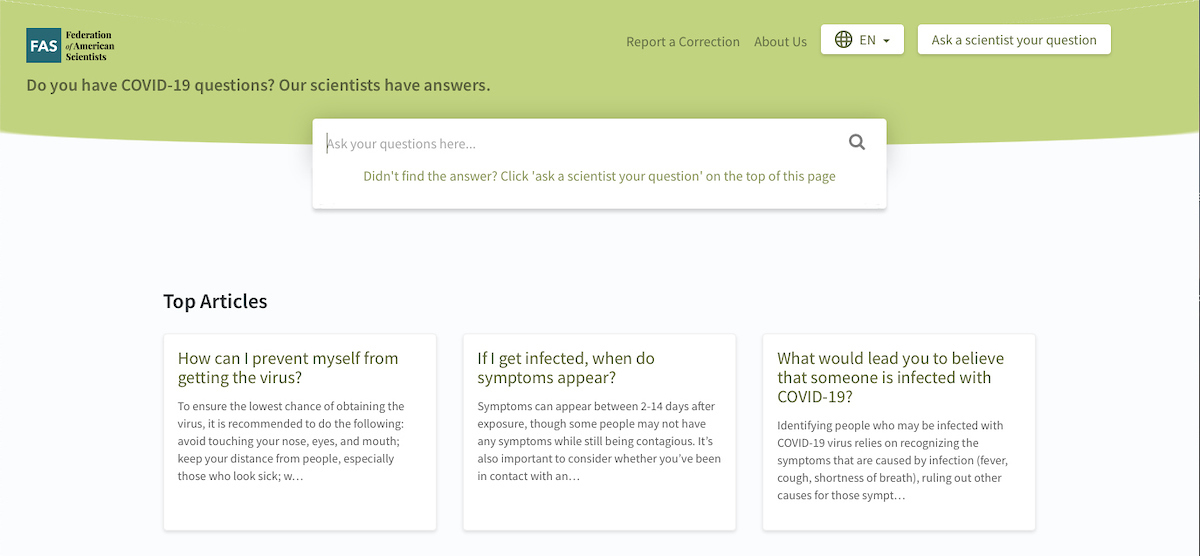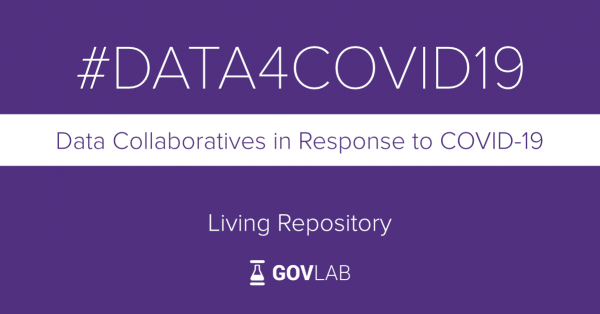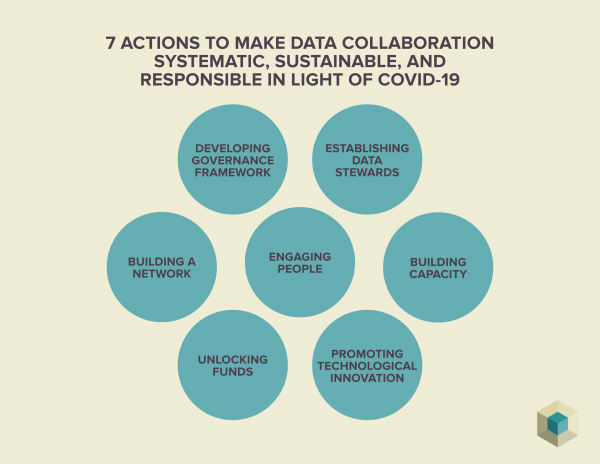NYU Press Release: “Unreliable tips on how to protect oneself from the novel coronavirus and fake news about the COVID-19 pandemic are spreading as quickly as the virus itself.
The Governance Lab (The GovLab) at the New York University Tandon School of Engineering has collaborated with the Federation of American Scientists (FAS) and the State of New Jersey Office of Innovation to launch a free, interactive tool aimed at cutting through the noise and presenting clear, scientist-led, and evidence-based information and advice to the public.
Available in English and Spanish, “Ask a Scientist,” allows users to find answers to a wide range of commonly asked questions about the virus, the severity of the outbreak, best methods of prevention, and steps to take in the event you fall ill. All posted content is obtained from the World Health Organization, the Centers for Disease Control and Prevention, and other rigorously verified sources.

“Ask a Scientist” features a free, interactive tool allowing users to submit questions to a team of FAS researchers and a crowdsourced network of vetted science experts. In English and Spanish, the site also includes top articles and the latest information, and answers to a wide range of commonly asked questions about the COVID-19 epidemic, the severity of the outbreak, best methods of prevention, and steps to take in the event you fall ill.
If users do not find an answer to their specific questions, they have the option of submitting them to a team of FAS researchers and a crowdsourced network of vetted science experts led by the National Science Policy Network. Users can expect an answer within an hour, although that timeframe is expected to shorten as the network increases in size. Every answer is reviewed to ensure accuracy and timeliness, then added to the knowledge base for the benefit of others….(More)”.



